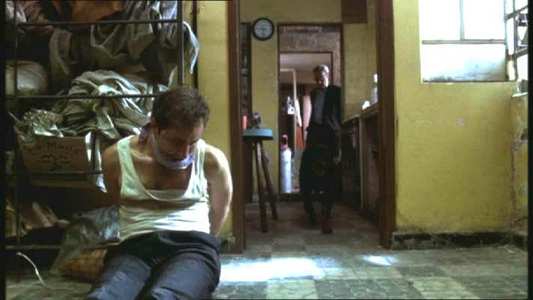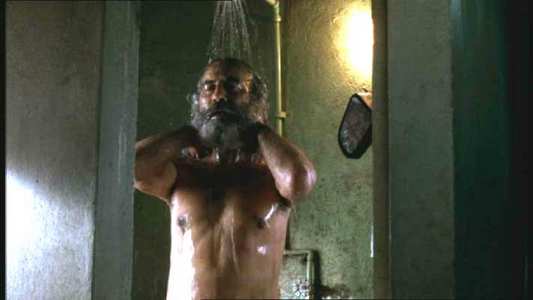Review of Amores Perros (Love`s A Bitch)
Introduction
The buzz surrounding Amores Perros (Love’s a Bitch) has probably exceeded any other cult movie in the past year, excepting Crouching Tiger, Hidden Dragon. Alejandro González Iñárritu’s debut film has been hailed as “the first classic of a new decade” and the most “exciting movie out of Mexico” in the last 50 years – and ‘better’ than Pulp Fiction, the film it is most likened to.
Amores Perros owes its comparison to Pulp Fiction to its intertwining trilogy of stories – but in fact the visceral, intense nature of the film makes it more similar to Tarantino’s other classic, Reservoir Dogs. The opening story, "Octavio and Susana", tells us about a young man falling in love with his sister-in-law, and the obvious repercussions it has on their family. "Daniel and Valeria” is the ‘filling’ of the sandwich, about a young model whose looks are disfigured in a car crash. The final part is called "El Chivo and Maru" and is the heart of the film, charting a homeless hitman’s attempts to reconcile himself with his estranged daughter.

Video
Iñárritu’s visuals are spectacular to say the least, and the picture has been given a good transfer by Optimum. The director uses the same gritty palette seen recently in Traffic, so if the colours seem muted to you then it is because that was the director`s intention. The print is clean – containing far less specks than I remembered when I saw it at the cinema – and the level of detail relatively high, considering the budget this guerilla filmmaker must have been on to begin with.
The film is shown in its original widescreen format, and is anamorphic.

Audio
The DVD has a 5.1 Spanish track that, although not bad, is a little disappointing. The bass sounds weak and key scenes such as the exhilarating car chase do not impress as much as it should do.
The subtitles are yellow with black outline, and so are readable on every colour background – if only all foreign film distributors took into account the difficulty of reading white subs on a white background!

Features
The extras included here are not bad at all – and I would have been very happy to see anything at all considering that this was not a high profile release – but the milk has been soured by the fact that the US release has an extra commentary and two extra featurettes.
Saying that, the R2 does keep the rest of the extras - most importantly, the impressive set of deleted/extended scenes. There are 13 of these cut scenes, each with a commentary in Spanish and an English subtitled translation also. The making-of featurette lasts 8 minutes and is of good quality, but much too short. Rounding up the extras are 3 music videos, a trailer and publicity posters. The menus are nicely animated, with music from the film accompanying them.

Conclusion
Amores Perros can be very difficult to watch. Firstly, it is shot mostly through handheld cameras and has a gritty colour scheme. Secondly it runs in at over 2 ½ hours and gets a tad overlong, especially in the middle section. Thirdly, the subject matter is so intense and fearless that it can make for uncomfortable viewing. My main criticism of Amores Perros is that the three-plot structure does not seem to add much to the film, instead seeming like separate chapters in a movie, whilst only being drawn together right at the end. However, this does not take away from the brilliance – in parts – of this film. The rawness of the story cannot hide its heart, which is felt most at the ending, createing an edgy mix of unsentimentality and sympathy. Those who liked Kieslowski’s Trois Couleurs trilogy must take a look at this.
Is it better than Pulp Fiction? Nowhere near it. Should it have taken the Best Foreign Film Oscar over Crouching Tiger? In my opinion, no way. But Amores Perros is a fantastic debut by a director to look out for, and one of the best foreign films of the past two years. The UK DVD is good, but real fans should check out the Region 1 disc.
Your Opinions and Comments
Be the first to post a comment!